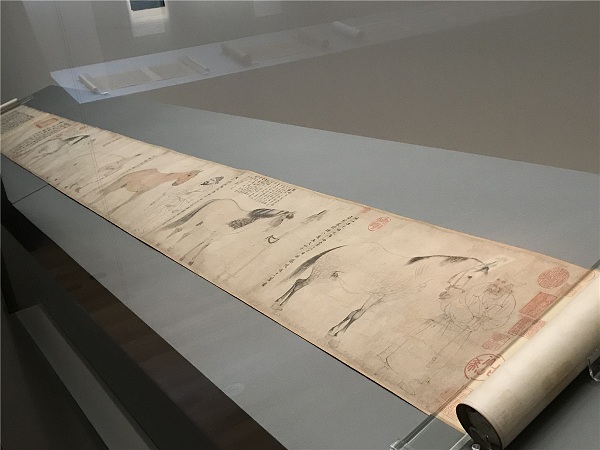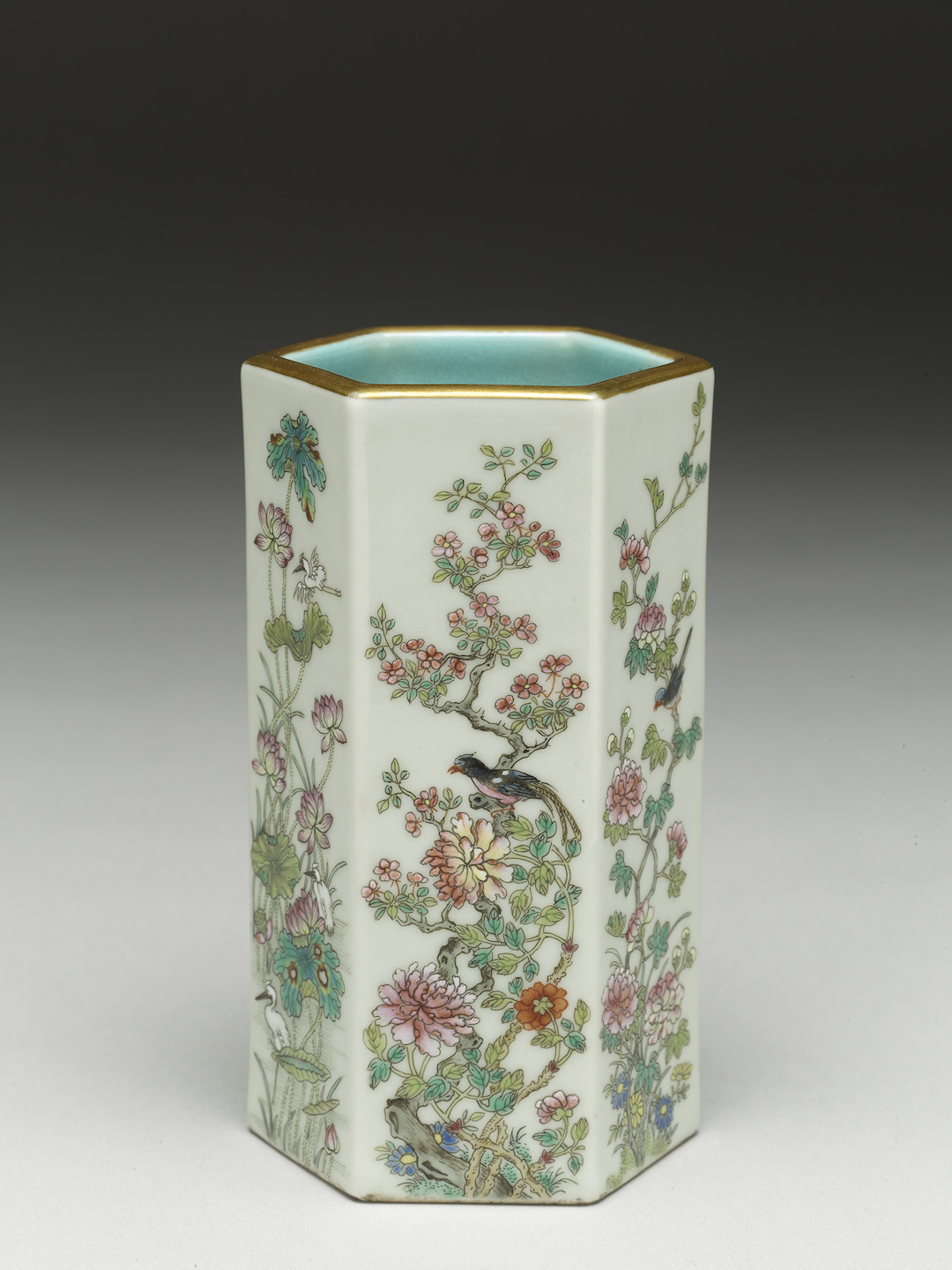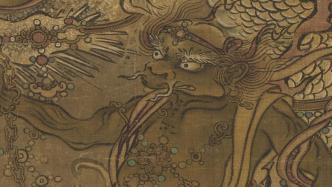
The "Three Officials on Tour" collected by the National Palace Museum in Taipei is a huge Taoist painting. There are more than 80 entourages in the painting, including heavenly generals, land gods, dragon kings, fish spirits, etc., with diverse and unique shapes, which are worth watching carefully.
The old title of this painting was painted by Ma Lin, a court painter of the Southern Song Dynasty, but the date of creation is still uncertain, and it is generally believed to be no later than the Ming Dynasty. It is not common to see paintings of the "Three Officials" traveling together in the same frame. This image is not only a wonderful painting, but also an icon to be worshipped. The special artistic and religious value is an important reason for being approved as a "national treasure".
The Paper learned that the "National Treasure Spotlight" of the National Palace Museum in Taipei has recently been updated. The exhibition provides an in-depth interpretation of this calligraphy and painting from the wonderful details such as the diverse and peculiar entourage of the three officials, and the style and techniques of the expression of mountains, rocks and water patterns.
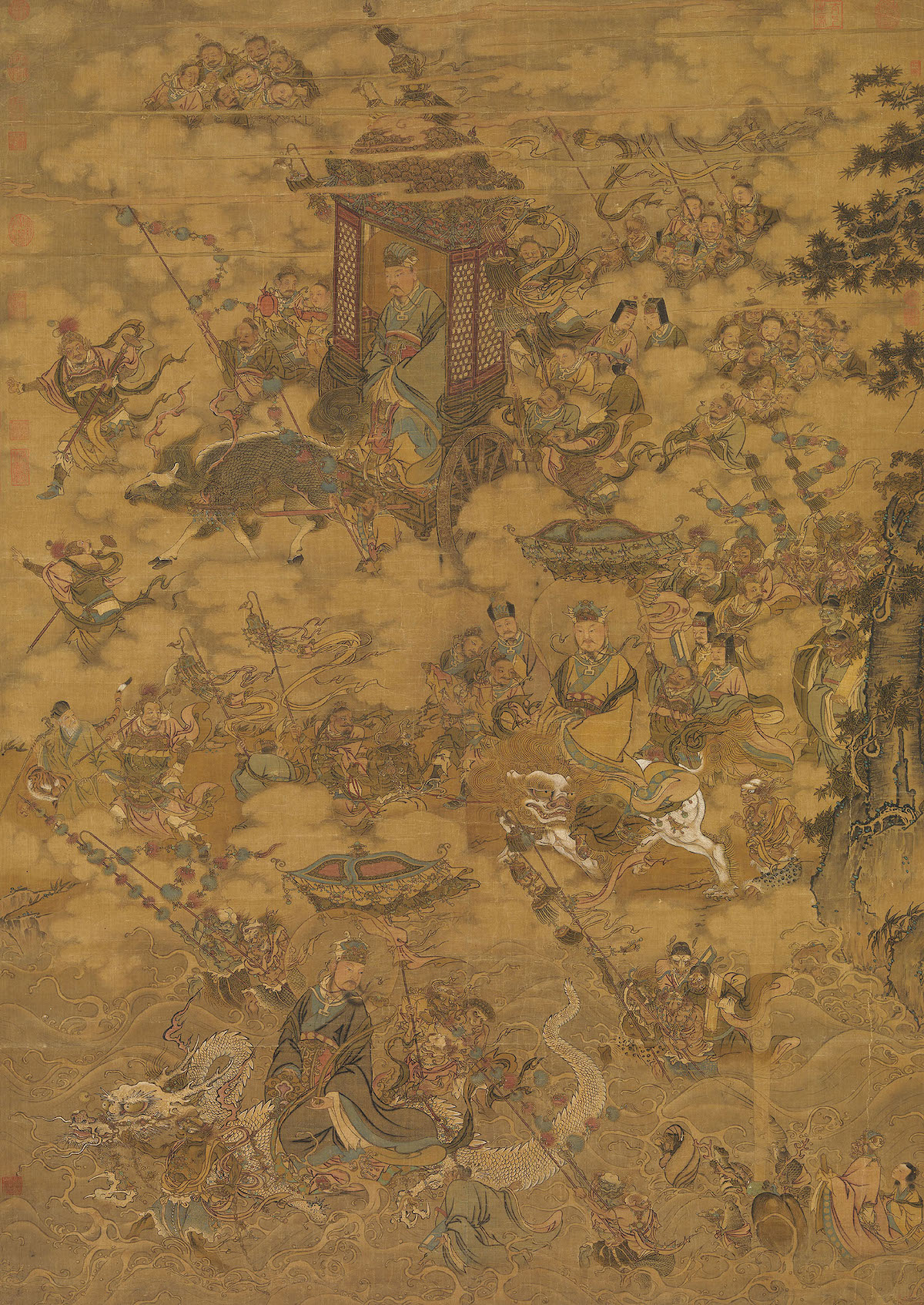
Old title Song Malin "Three Officials Going on Tour" Collection of the National Palace Museum, Taipei
Who are the "three officials"?
"Three Officials Going on Tour" uses ink and gold color on a huge silk, depicting the grand scene of the heavenly officials, local officials, and water officials, collectively known as the "three officials", going on tour. Believers believe that the three Taoist gods will regularly visit the three realms of heaven, earth, and water under their jurisdiction to investigate good and evil, and judge good and bad. Their roles are like the commanders and judges of the sea, land and air in the world.
Among the extant portraits of the three officials, the earliest and most exquisite are the vertical scrolls (referred to as the American version) of the Southern Song Dynasty "Tianguan", "Diguan" and "Shuiguan" collected in the United States. ) comparison appreciation. The theme of the two is similar, but the composition and content are different.
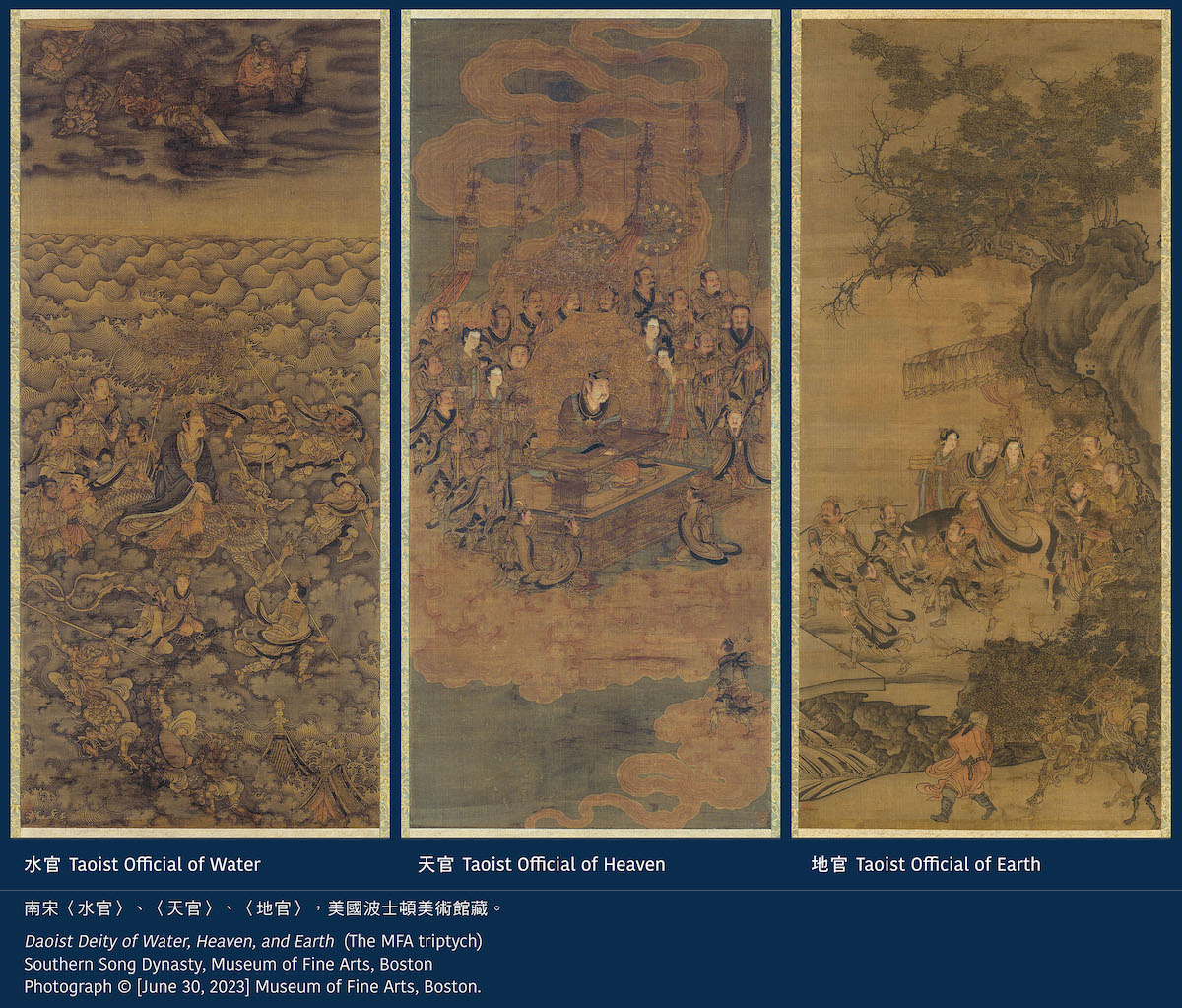
Three sets of vertical scrolls of "Tianguan", "Diguan" and "Shuiguan" collected by the Boston Museum of Fine Arts in the Southern Song Dynasty are not exhibited in this exhibition
Find out, what are the similarities and differences between this group of paintings and the "Three Officials on Tour" in the National Palace Museum in Taipei?
Why is "Three Officials on Tour" a "National Treasure"?
In the existing works of the three officials, most of them "sit" on the temple or "stand" among the colorful clouds with wat boards in their hands. For example, the United States version and the Taipei Palace Museum version have fewer paintings showing the "outing tour" of the three officials. It is even rarer for the National Palace Museum in Taipei to integrate the scenes of the three official tours into one painting.
According to the "Yizhou Famous Paintings Record" of the Song Dynasty, when the Tang Dynasty held large-scale Purdue ceremonies such as the Water and Land Ceremony, portraits of the three officials and other gods would be displayed on the mandala to represent the gods who were invited to the scene. The United States version and the Taipei Palace Museum version may have been worshiped by believers as efficacious icons on similar occasions.
The special artistic and religious value is an important reason why the National Palace Museum in Taipei was originally approved as a "national treasure".
What is painted in "Three Officials Going on Tour"?
The Heavenly Officials, Local Officials, and Water Officials of the National Palace Museum in Taipei travel on unicorn chariots, lions, and dragons. Clouds, trees, rocks, and waves represent the three realms of heaven, earth, and water under their jurisdiction. There were more than 80 people in the entourage, which brought out the dignity of the three officials and the prudence of the tour.
The highlight of this painting that cannot be missed is the attendants with diverse and unique shapes of the three officials. In addition, details such as wheel covers, clothes and scales of mythical beasts in the painting are all drawn with gold lines, making them magnificent.
Have you seen the ghost pawns wearing all kinds of animal skin pants and the fish essence shrimp monster next to the Dragon King? Each of the three officials has a special person to help them hold the wat board, the official seal, and the books used to record the merits and demerits of fortune and misfortune. Have you found them all?
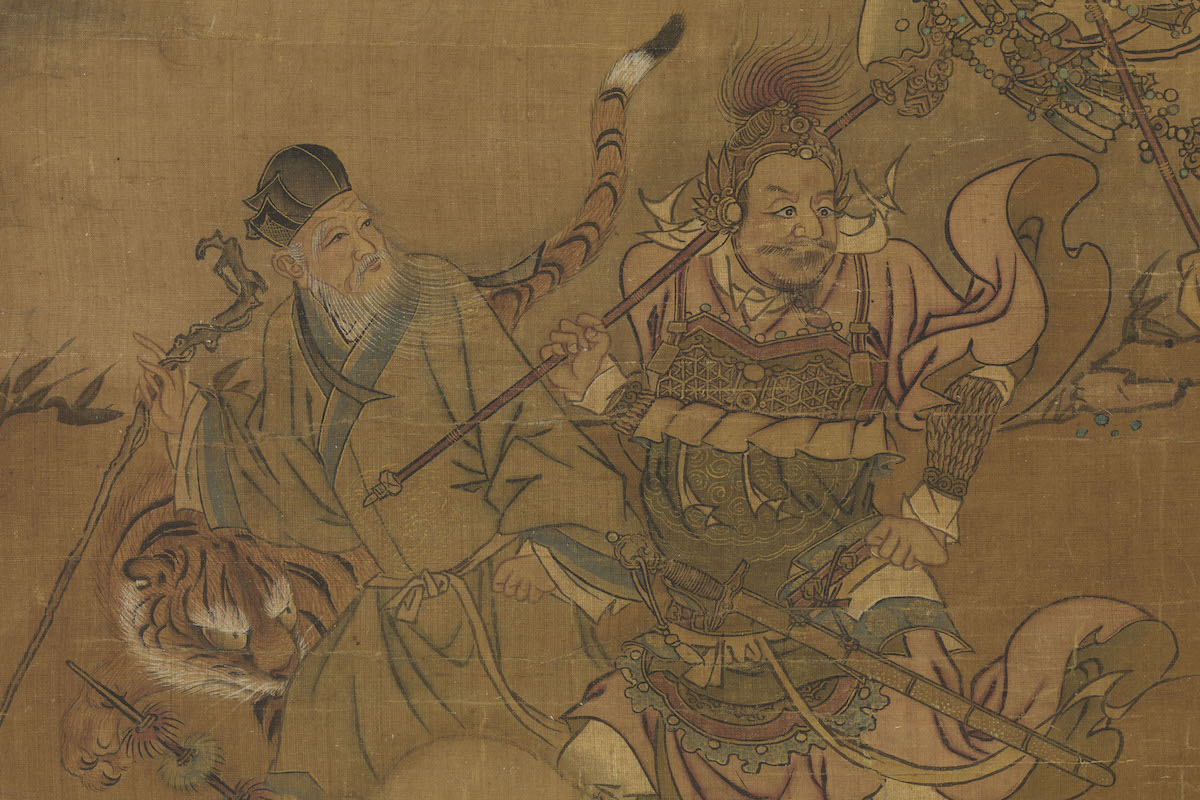
These two are the gods and military officers who helped the local officials to open the way. Scholar Li Fengmao believed that the old man who accompanied the tiger was the god of the earth.
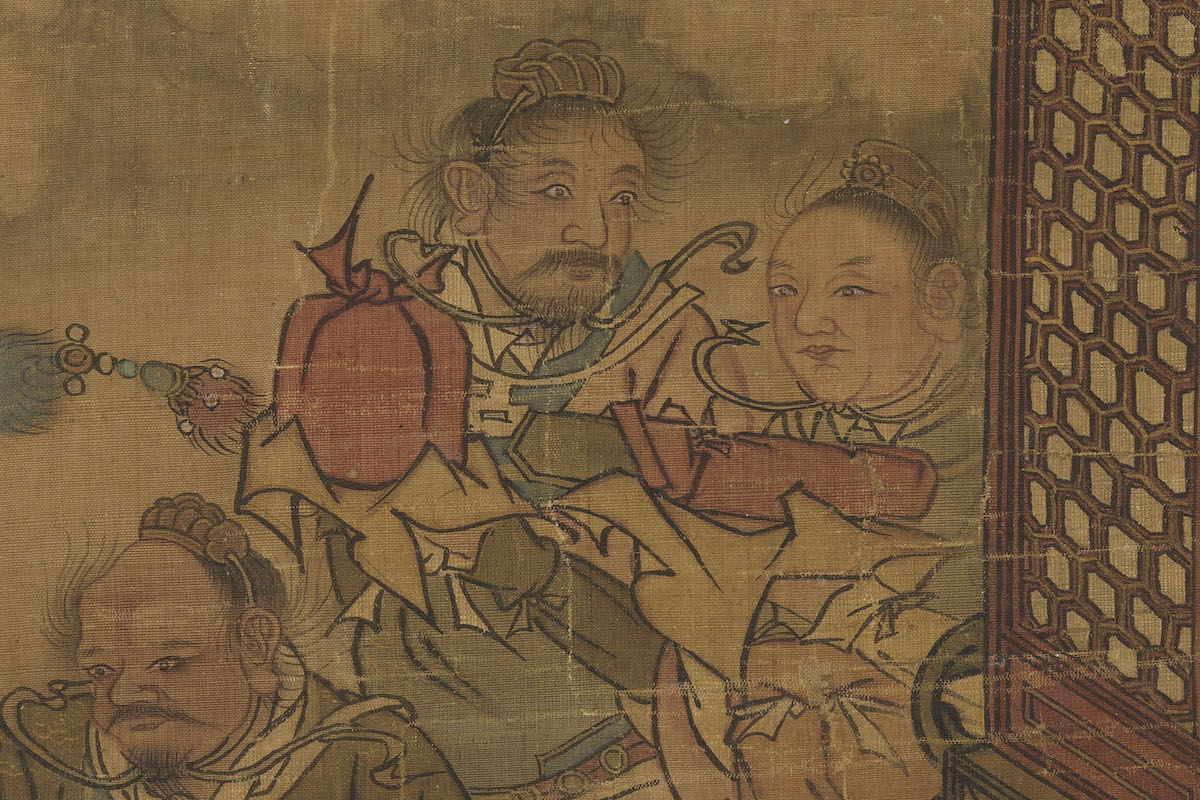
These two are attendants who help the heavenly official to take the wat board and the official seal.
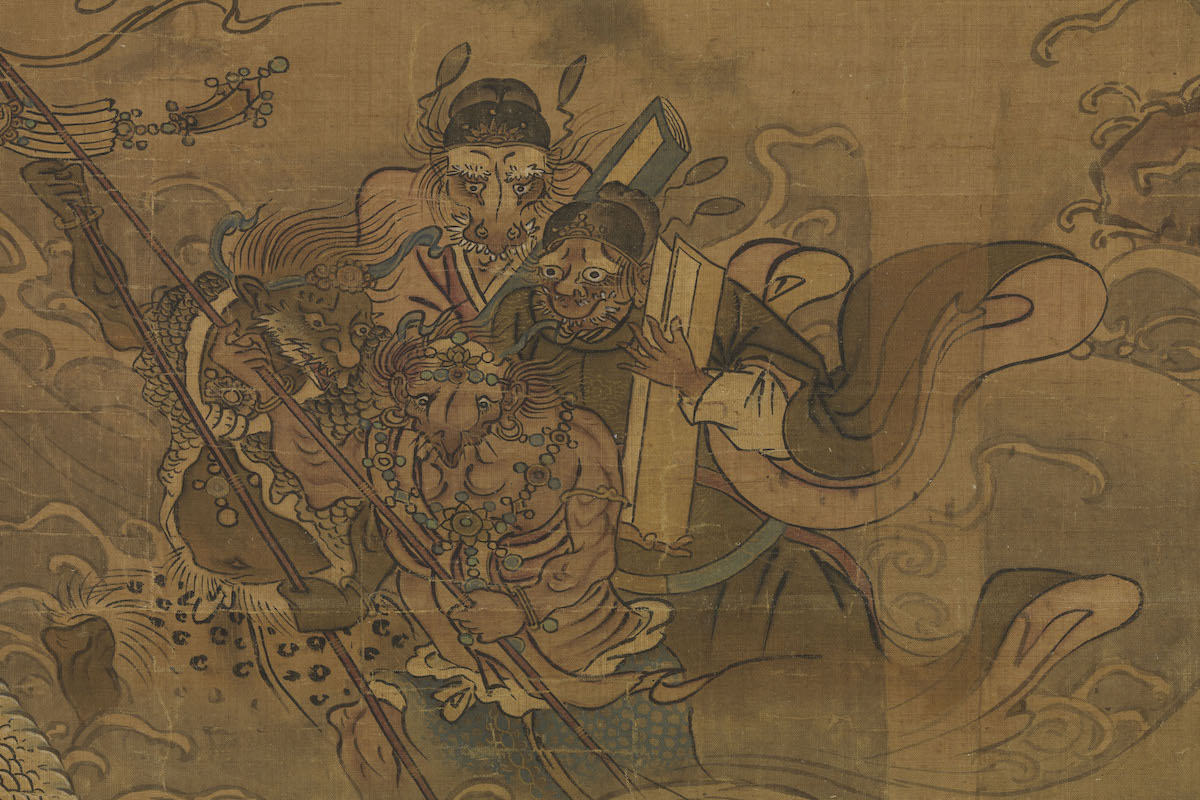
These are ghost soldiers and ghost officials who help water officials raise flags and hold books.
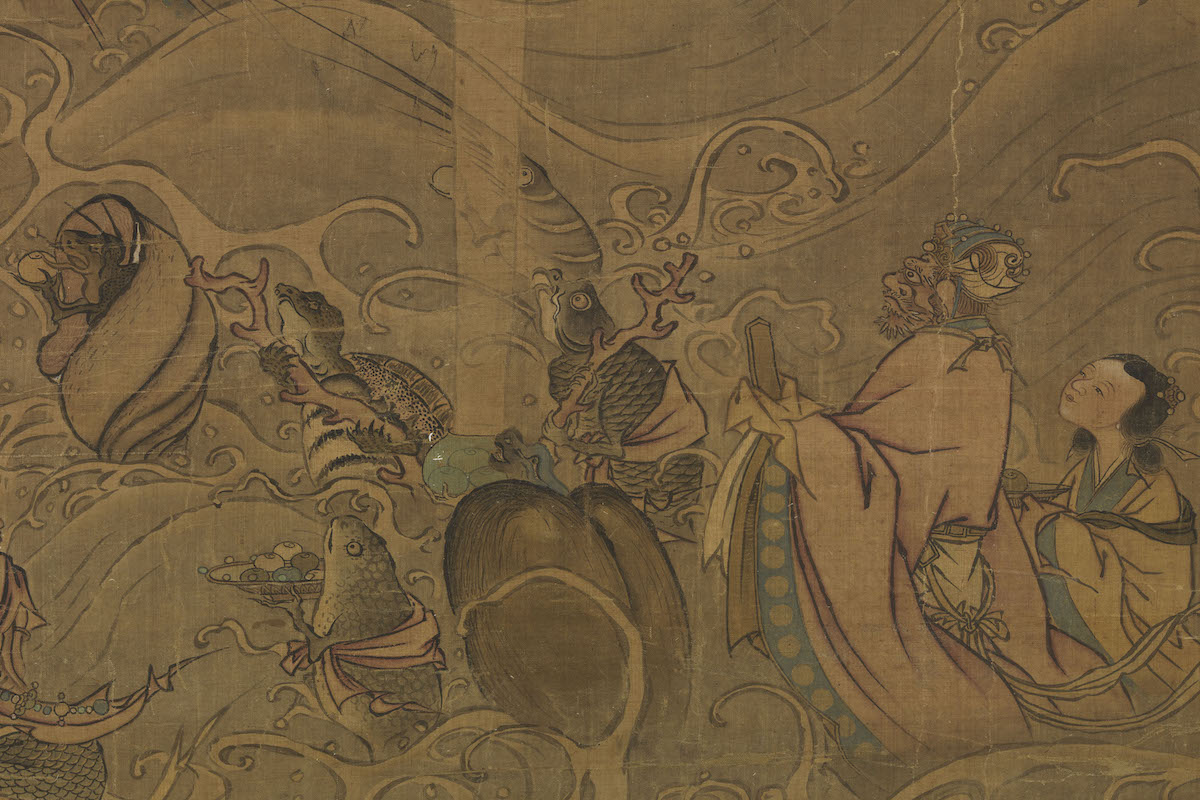
These are the dragon kings and fish spirits and shrimp monsters who offer corals and orbs to the water officials.
Can you find the wonderful details traced with gold lines? In addition to the dragon pattern on the robe of the Shuiguan, the pattern on the wheel of the Tianguan, the scales of the unicorn, and the hair of the lion, is there any other place where the gold painting technique is used?
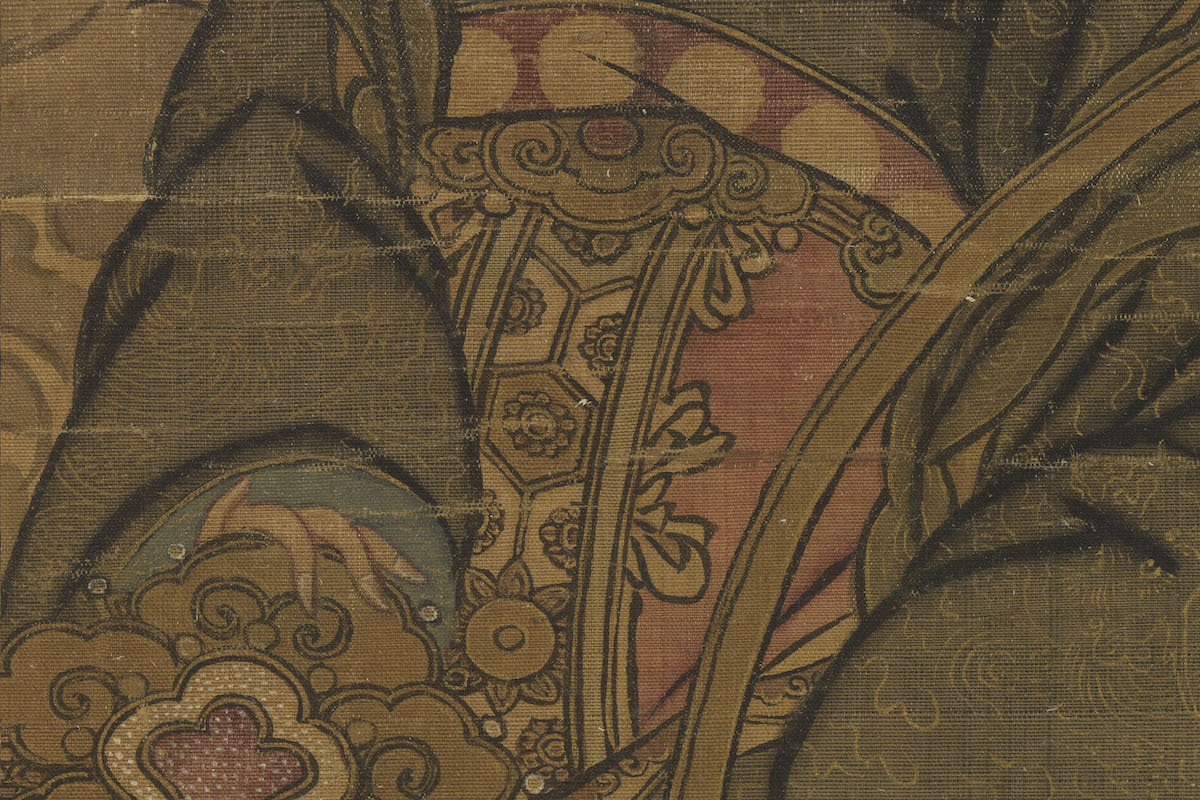
The dragon pattern on the robe of the water official

The pattern on the wheel of Tianguan seat
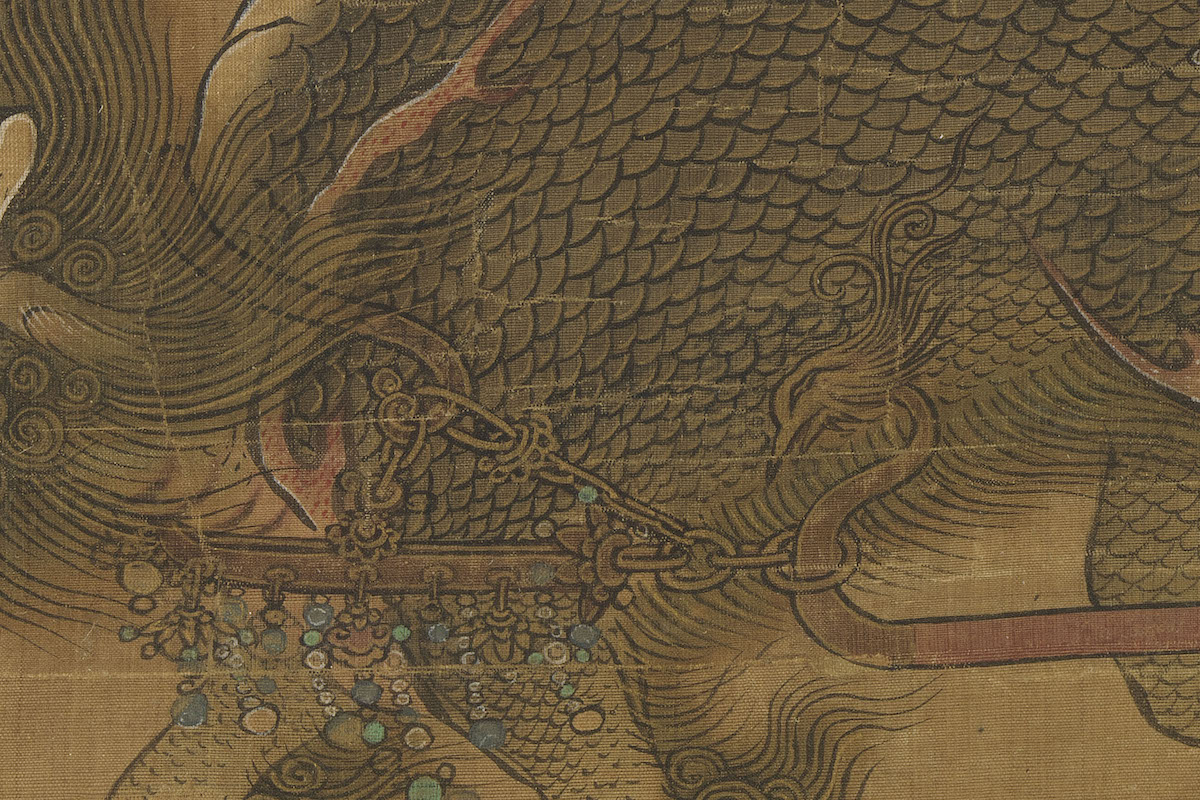
Kirin piece

lion hair
The "Three Realms" that many people in Taiwan enshrine at home are the three officials. There are also temples dedicated to the three officials in various parts of Taiwan. The Lantern Festival and Zhongyuan Purdue are also related to the beliefs of Tianguan and Diguan among the three officials.
Who painted "Three Officials on Tour"?
According to the inscription, this painting was made by Ma Lin. Ma Lin was the son of Ma Yuan, an important painter of the Song Dynasty, and was active in the Southern Song Dynasty Academy of Painting in the 13th century.
The painter used the usual techniques of the Ma family and his son to depict landscapes and landscapes. He used the "axe chopping" stroked horizontally to present the rough surface of the rocks as if chopped by an axe, and used the trembling "trembling pen" lines to depict waves. But the painting method of ghosts and ghosts is closer to the religious figure painting style of Yuan and Ming Dynasties.
The date of creation of this painting is still uncertain, but it is generally believed to be no later than the Ming Dynasty.
An Analysis of the Style and Technique of "Three Officials on Tour"
The mountains and rocks in "The Picture of Three Officials on Tour" are expressed by "cracking with an axe", which is similar to the painting method of mountains and rocks in Ma Lin's "Listening to the Wind in the Pines".
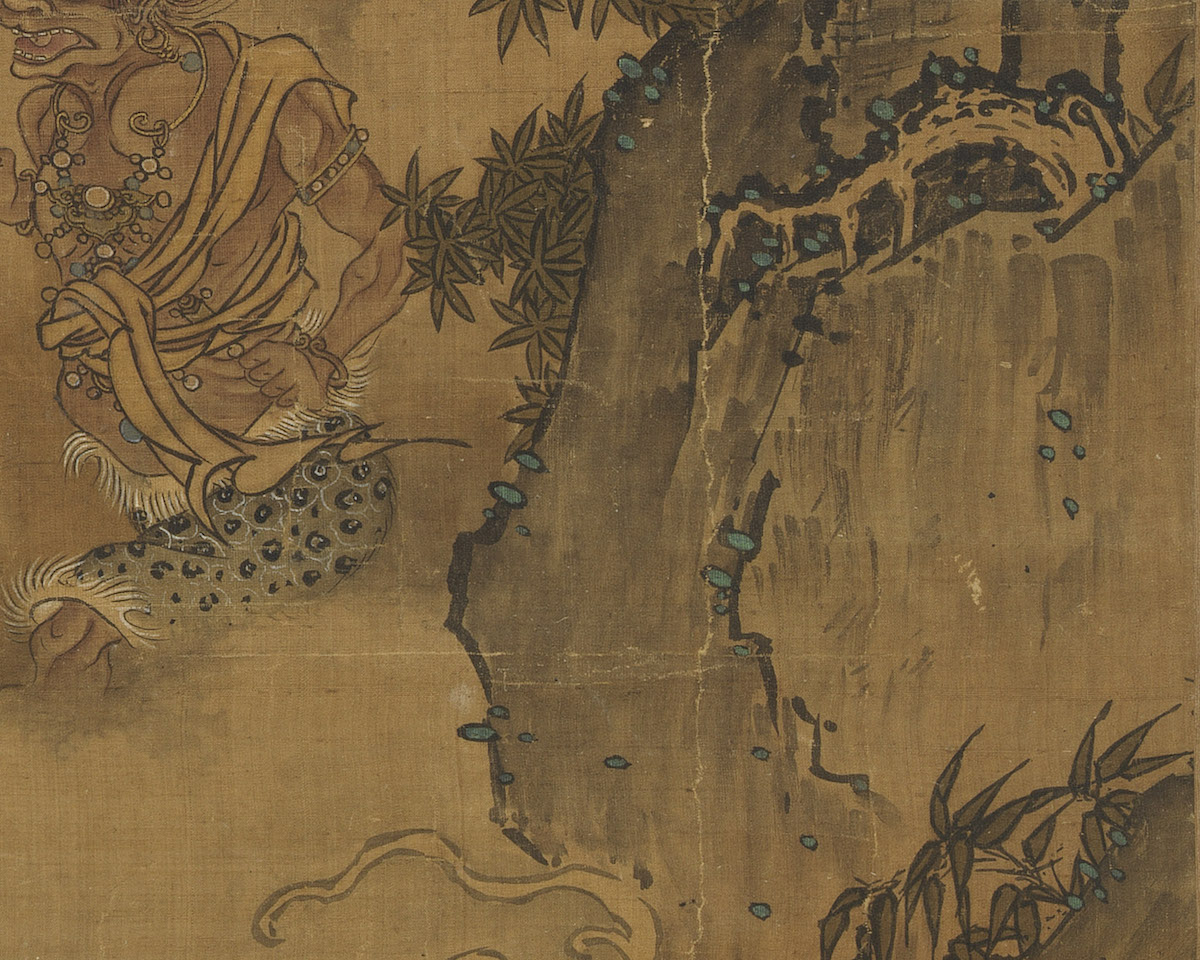
Ma Lin's "Three Officials on Tour", in the collection of the National Palace Museum, Taipei.
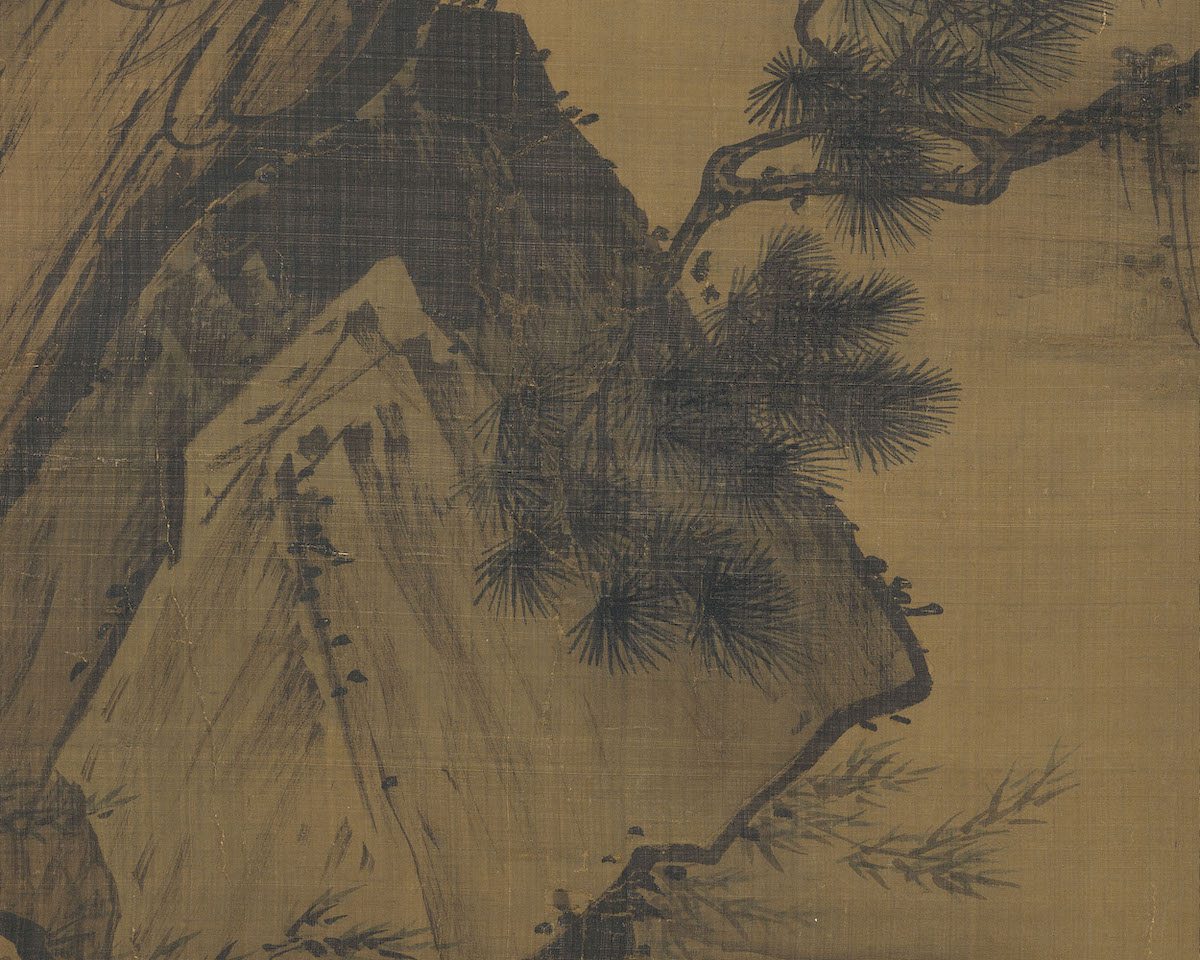
"Listening to the Wind in the Pine Trees" by Ma Lin, collected by the National Palace Museum, Taipei.
The water pattern in "Three Officials on Tour" is expressed with the technique of "vibrating brush", and the waves are shaped like slender tendrils, similar to the wave painting method in Ma Yuan's "Water Picture".
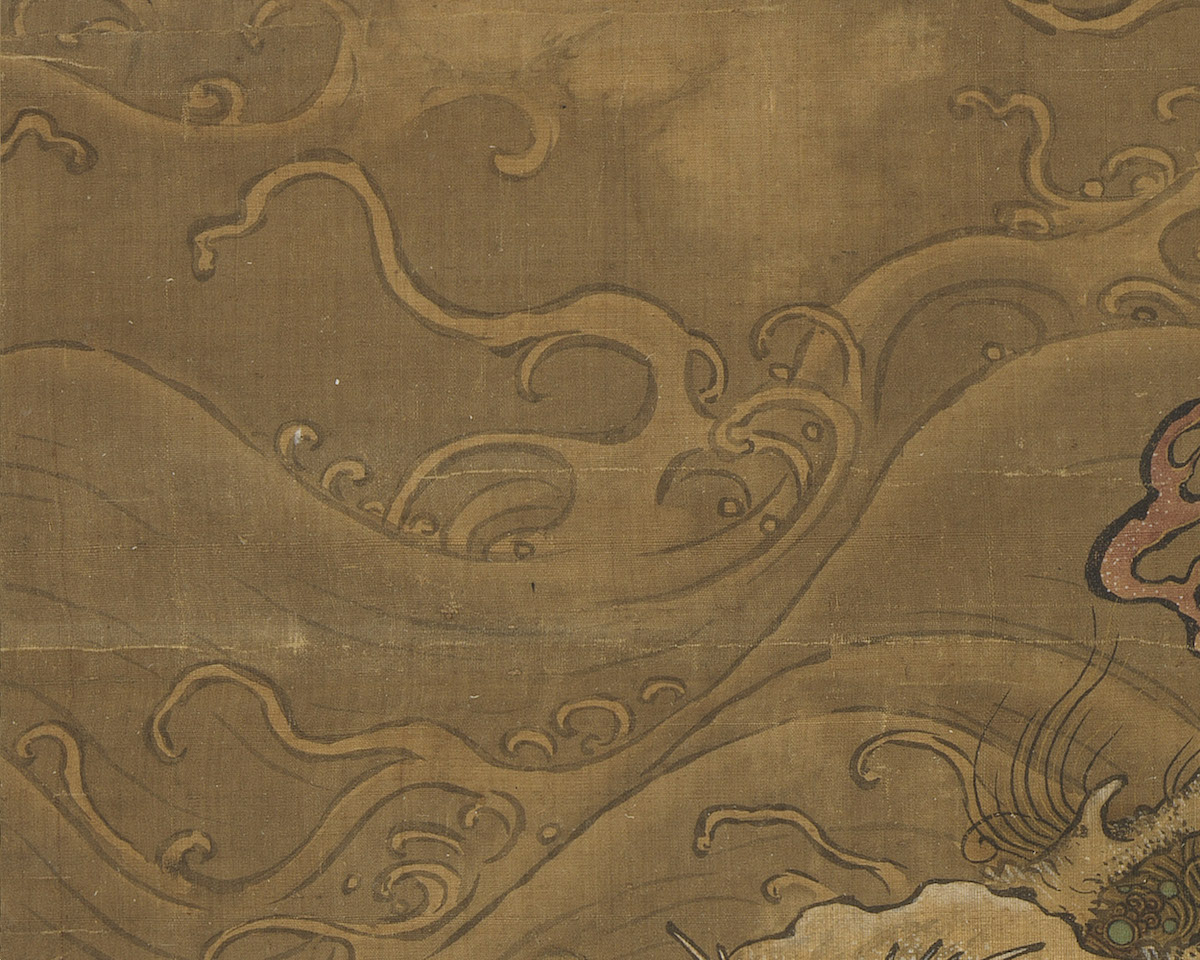
Ma Lin's "Three Officials on Tour", in the collection of the National Palace Museum, Taipei.

Ma Yuan's "Water Map", collected by the Palace Museum in Beijing. Not this exhibit
The immortal faces in "Three Officials on Tour" are plump and the facial features are smooth, which is similar to the face painting method in "Ying Zhen Xiang" by Yuan Dynasty people.
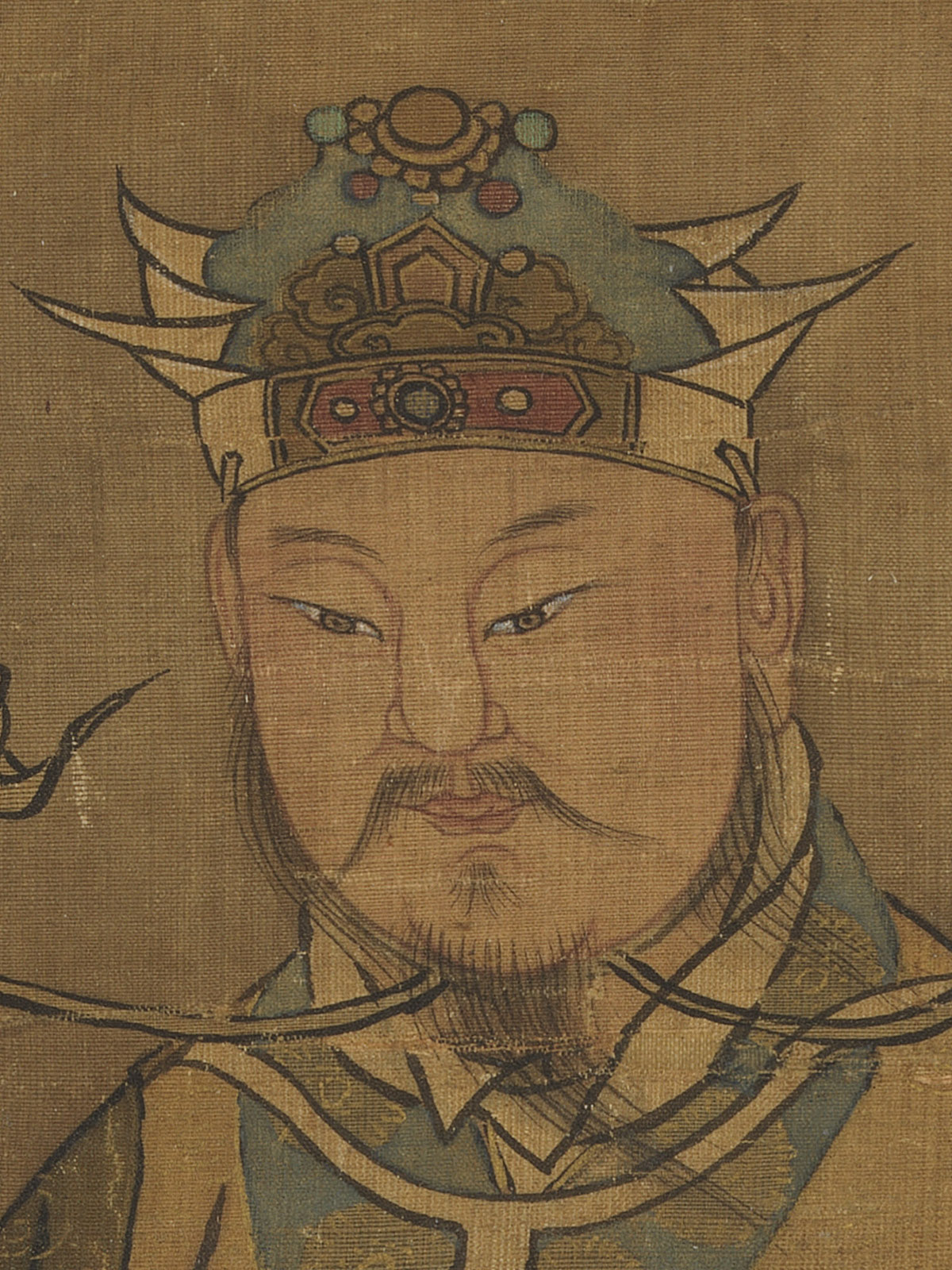
Ma Lin's "Three Officials on Tour", in the collection of the National Palace Museum, Taipei.
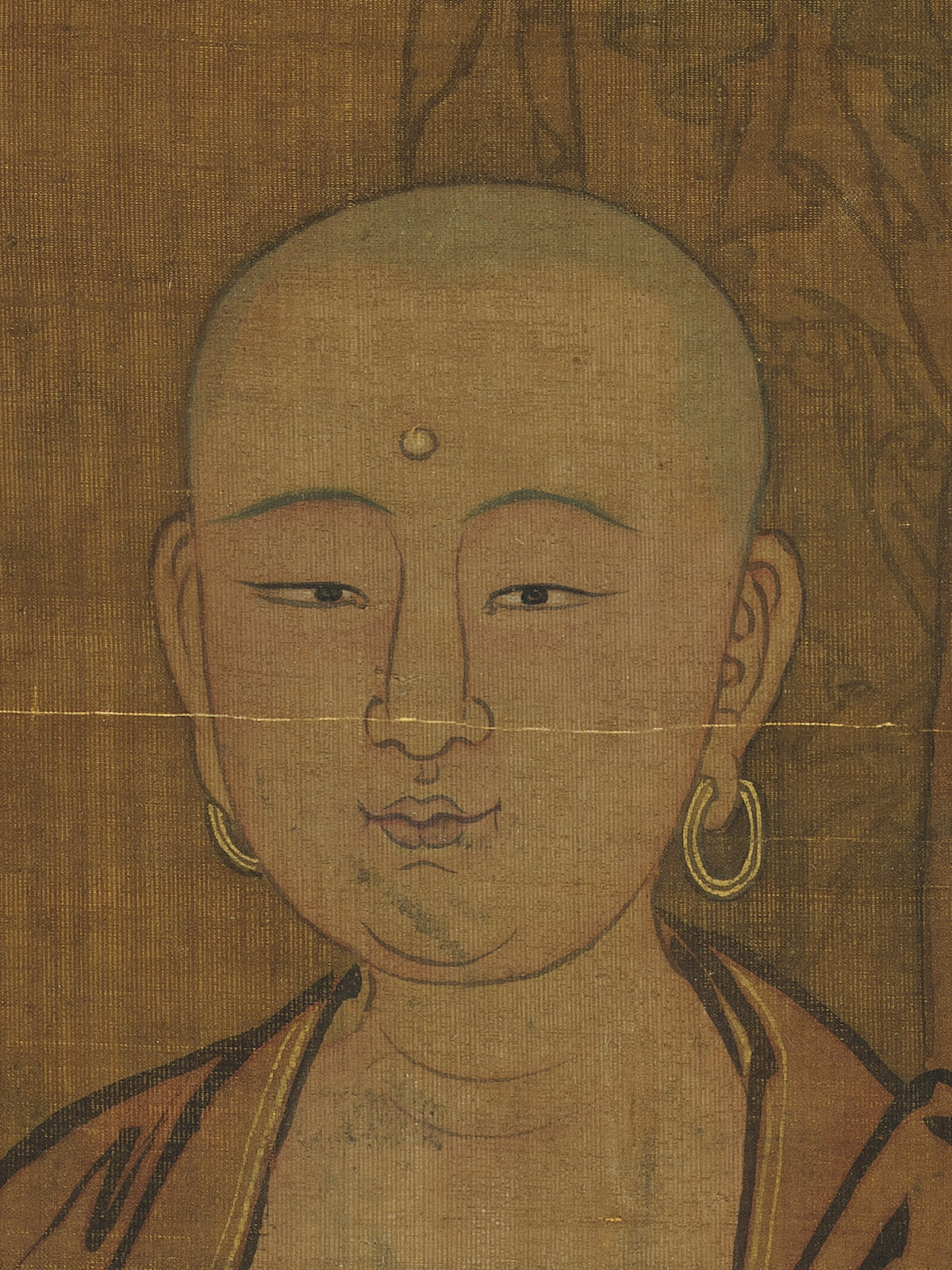
Yuan Ren "Ying Zhen Xiang", collected by the National Palace Museum in Taipei.
The clothing patterns in "Three Officials Going on Tour" use "nail head and mouse tail tracing", with thick heads and thin tails, and large changes in line thickness, which is similar to the clothing pattern painting method in "Ying Zhenxiang" by Yuan Dynasty people.

Ma Lin's "Three Officials on Tour", in the collection of the National Palace Museum, Taipei.
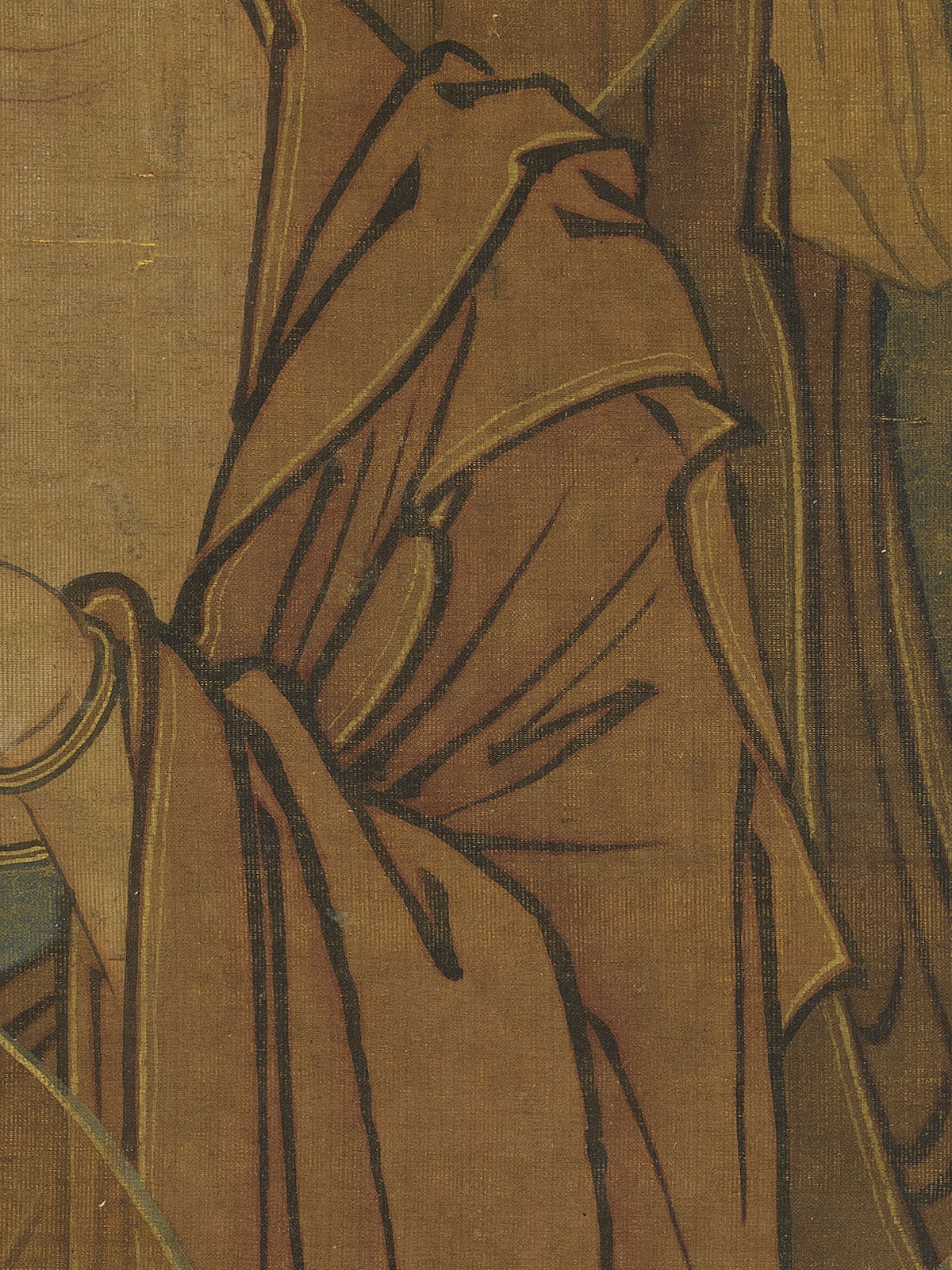
Yuan Ren "Ying Zhen Xiang", collected by the National Palace Museum in Taipei.
The body of the ghost soldier in "Three Officials on Tour" uses line drawing and shading to express the three-dimensional sense of the skeleton and muscles, similar to the painting method of the ghost soldier's body in "The Picture of Zhongkui in the Cold Forest" by Li Shida of the Ming Dynasty.
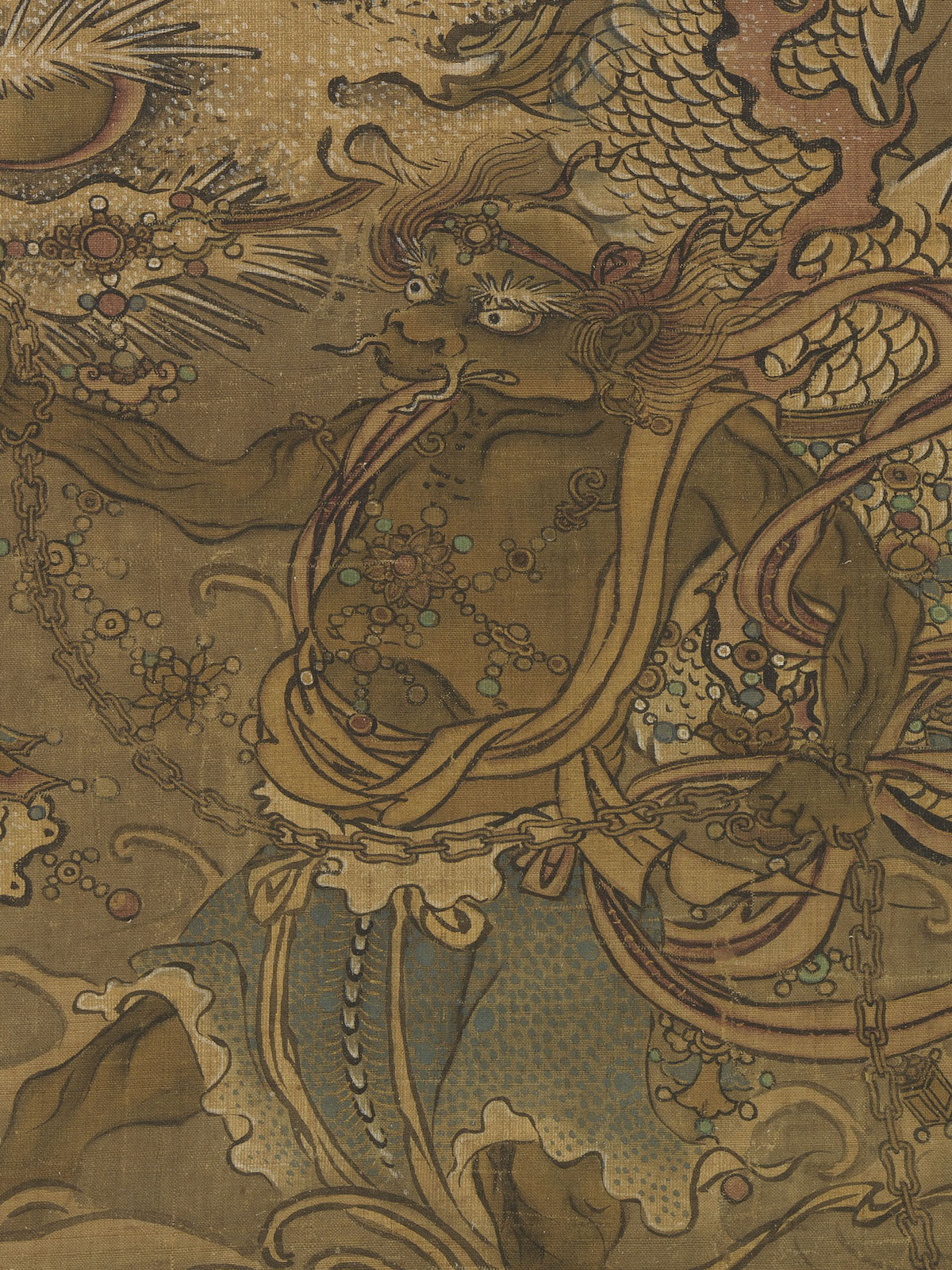
Ma Lin's "Three Officials on Tour", in the collection of the National Palace Museum, Taipei.
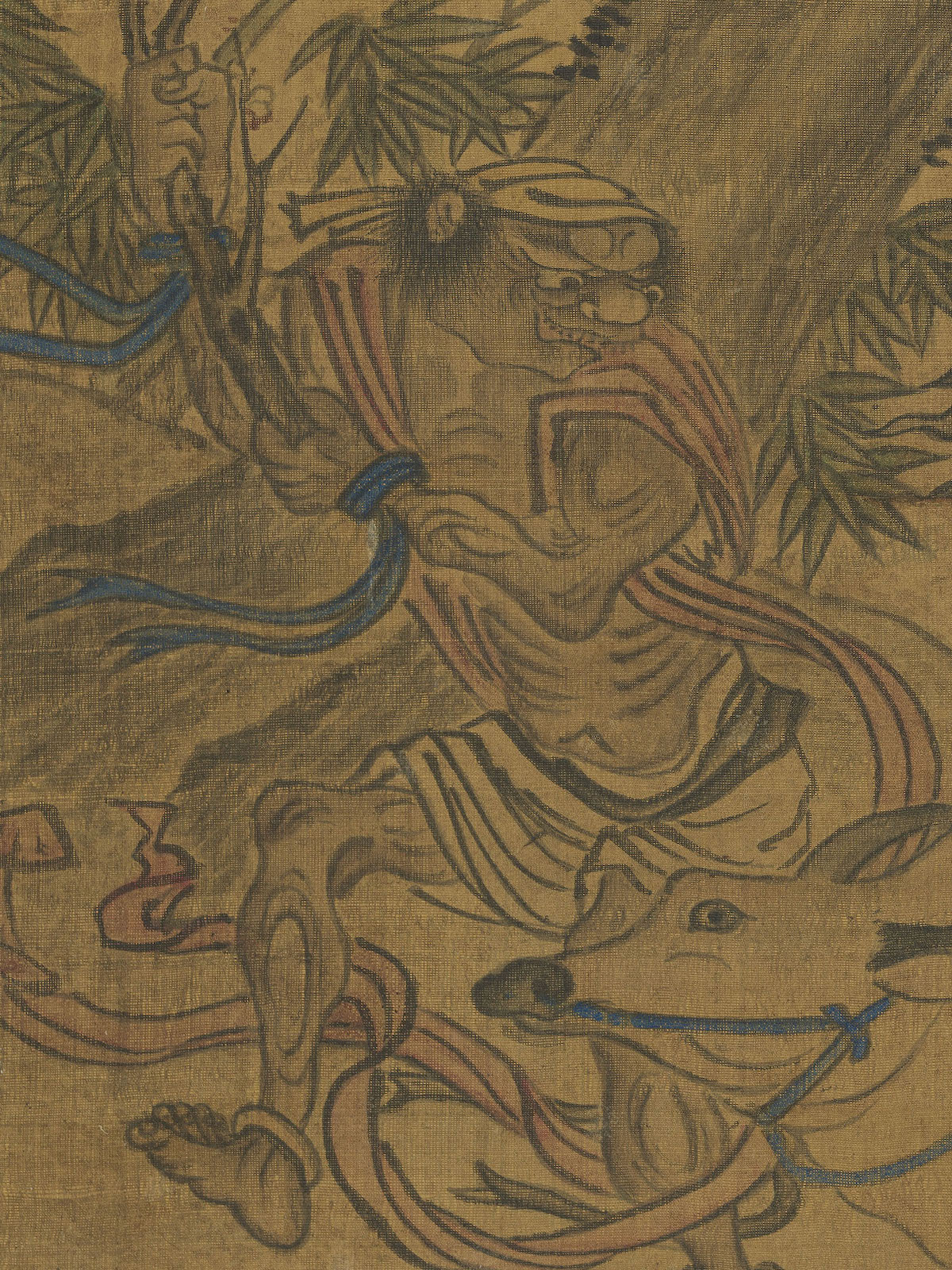
Li Shida's "The Picture of Zhongkui in the Cold Forest", collected by the National Palace Museum in Taipei.
It is reported that the "National Treasure Focus" exhibition will last until October 1, 2023.
(This article is based on relevant exhibition materials and historical documents on the official website of the National Palace Museum in Taipei.)
